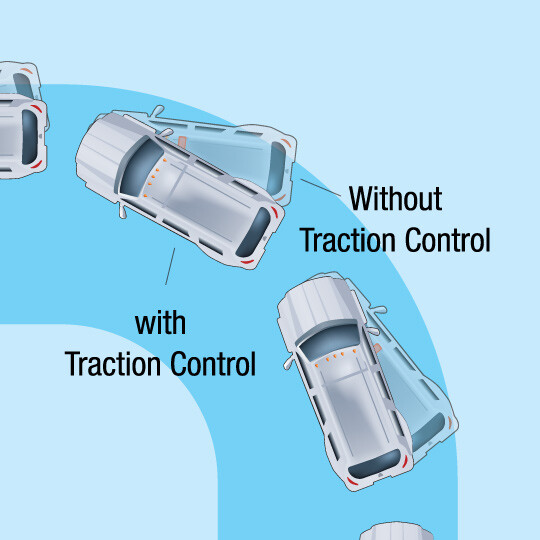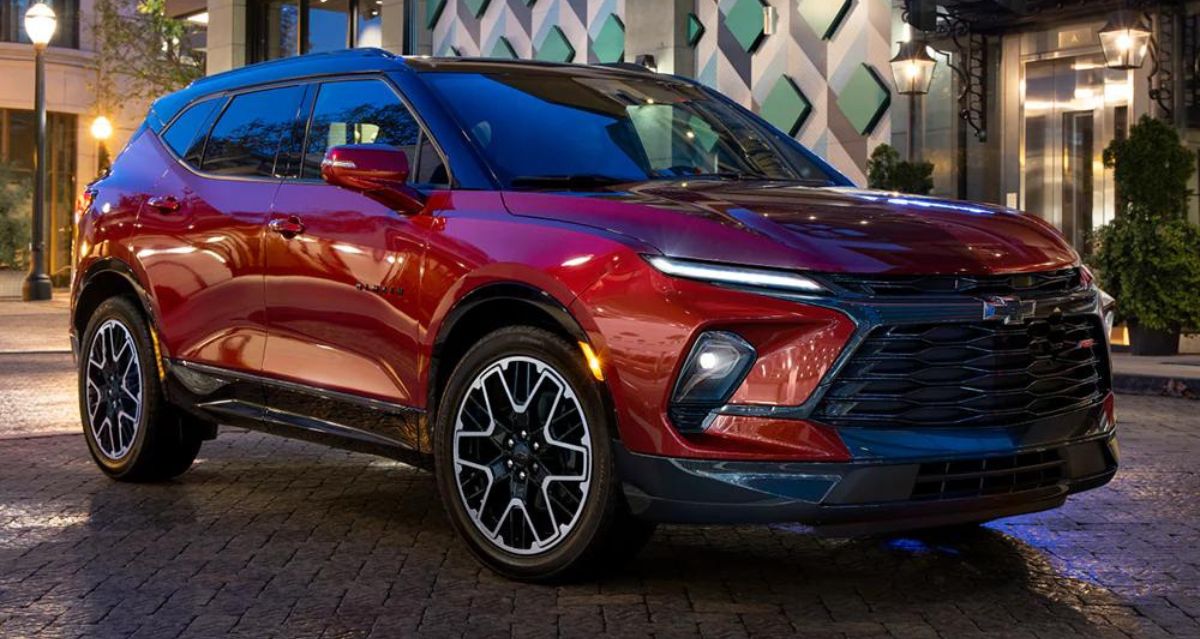As a modern cruiser and off-roader, the Chevrolet Blazer embraces the road with a confidence that oozes sophistication. Hidden within its sleek metal shell is a tech marvel that ensures you maintain poise even on the trickiest terrains: traction control. However, how does this often-underestimated vehicle manage to contain both chaos and momentum under precise control, while delivering power with a surgeon’s precision? It’s all about the science, which we’ll explore, right down to the bits and bytes. Buckle up, it’s time to deep dive into the technological haiku that drives the Chevy Blazer.
Table of Contents
Basic Concept of Traction Control

To truly appreciate the magic of Chevrolet Blazer’s traction control, a delve into the basic concept of traction control is in order. Traction control is like an invisible hand that prevents your vehicle from spinning its wheels when it’s struggling to gain grip. Think of it as an intelligent tool to maintain tire stability and ensure optimum grip, especially during tricky driving conditions such as rain, ice, or just an overly zealous foot on the accelerator.
Traction control kicks in when the car’s brain, its Electronic Stability Control (ESC), detects that one or more wheels are rotating at a different speed indicating potential loss of grip. Here’s where the physics comes in: the amount of force that your tires can exert on a surface, before they start to slip or spin, is the traction. Lose too much traction due to impromptu wheel spins and you become the captain of a two-ton potential sled, but that’s where traction control comes to save the day.
With a reading of every wheel and brake’s individual speed, it can selectively apply braking force to slow down the spinning wheel until it correlates to the speed of the other wheels. In certain advanced systems, including in our hero – the Chevrolet Blazer, the traction control not just applies brakes but can also modulate engine power to assist in control.
Understanding traction control is a bit like comprehending the concept of brakes operating separately for each wheel. This might sound like an overkill in normal driving conditions, and rightly so, but it’s in adverse situations and hard cornerings where this technological marvel stands out. It sweeps in stealthily, corrects potential errors, and then quietly gets out of the way.
So, in the simplest terms, traction control is a sophisticated guarding system designed to keep your car’s wheels firmly planted on the ground, preventing any loss of control. Now that we have the basics covered, let’s see how this smart feature works within the complex systems of a Chevrolet Blazer. Buckle up for the ride!
How does Traction Control work in Chevrolet Blazer

Understanding the functionality behind the Traction Control system in a Chevrolet Blazer is like savoring a well-crafted plot of a thriller movie, it is fascinating and suspenseful at the same time. Like most vehicles that promise superior control on the road, the Chevy Blazer relies on a complex network of electronic sensors and actuators to ensure it stays planted even in the most challenging conditions.
Let’s crack the hood and dig a little deeper. At the heart of the Chevrolet Blazer’s traction control system is the Electronic Stability Control (ESC) module. The ESC module is essentially the brains of the operation. It receives real-time sensor information, quickly evaluates it, and sends out commands to various elements of the vehicle, all in a bid to keep the Blazer on its chosen path.
Detailing the information flow, the wheel speed sensors monitor the rotational speed of each wheel, sending this data to the ESC module. If the ESC detects a discrepancy between the driver’s desired path (think of this as the command from the steering wheel) and the vehicle’s current path, it intercedes.
To do this, the ESC strategically applies braking force to certain wheels or reduces engine power to restore control. The preventive power of this traction control is best appreciated when driving on slick or uneven surfaces as the system selectively brakes the spinning wheel to redistribute torque to those with the most grip.
Yet, it gets even more impressive! The traction control system is calibrated differently based on the Blazer’s driving mode. This can be manually adjusted via the Driver Mode Control switch conveniently located within the driver’s reach. Each mode offers a uniquely tweaked traction control setting, allowing the driver to get the best performance out of the Blazer regardless of the terrain or driving condition.
Blazer’s traction control system is, consequently, a technology that enhances driver control and optimizes vehicle handling capabilities. By coordinating and maintaining balance between engine output and the driving conditions, it creates a safer and more comfortable driving experience. It’s traction control taken to new heights and adjusted at the driver’s fingertips. It’s less about driving, and more about crafting the perfect journey.
Role of Sensors in Traction Control

The wizardry that allows the Chevrolet Blazer to maintain traction in adverse conditions is the sophisticated array of sensors it is brimming with. The traction control system functions, or rather thrives, on the accurate information fed by these sensors. Their primary role is to monitor everything from wheel speed to brake pressure and steering angle to throttle position. It’s like having a network of nannies supervising the vehicle dynamics on the micro-level.
A critical player is the wheel speed sensor, which sits behind each tire. It identifies if one wheel is spinning faster than others – a common telltale sign of losing traction. The moment this rascal perceives a rogue wheel trying to spin out of control, it sends out an immediate signal to the traction control system.
Pros monitoring brake pressure and steering angle aren’t bystanders either. They work cohesively with the speed sensor to paint a detailed picture of the vehicle’s current situation. Information such as steering wheel orientation and brake pressure application helps determine if the driver is seeking an urgent stop or making a hard turn. All this information gets relayed at an astonishing rate, giving the traction control system near real-time data to work upon.
Then, there’s the throttle position sensor- alerting the system if the driver has decided to step hard on the gas. If the vehicle is on a dicey surface (think ice or slick leaves), flooring the accelerator can make the wheels spin uncontrollably. This sensor helps the system realize this possibility and act on it.
Each sensor in the Chevrolet Blazer forms a critical part of an orchestra, monitoring various vehicle fronts and delivering real-time information to the traction control system. The result? You get to maintain hold of your Blazer even in the trickiest of situations. In this intelligent dance of sensors, traction control is more than just a controlled response- it’s a scientific art.
The Impact of Traction Control on Driving

Shrugging off concerns about weather conditions and road surfaces becomes simpler with the Blazer’s traction control feature in place. This advanced technology significantly alters the driving experience by providing a buffer between the driver and potential vehicle instability. It’s like carrying a skilled driving instructor along every journey, that extra presence providing guidance when no missteps are permitted.
Say, you’re driving on a hilly landscape or a particularly slippery sidewalk after a heavy downpour — situations where wheels are more prone to losing their grip. This is where the traction control does its magic, maintaining the car’s stability by selectively applying brakes to each wheel. The benefits for the driver? Increased control and decreased odds of accidents.
Not to mention, it can also help to prolong the lifespan of your tires. Excessive wheel slip can lead to inconsistent tire wear, as well as fluctuating economy of your fuel. So, what you get with this smart technology is not only enhanced safety but also savings in the long run.
Furthermore, the Blazer’s traction control feature helps to optimize driving performance by aiding in torque distribution and maintaining steady acceleration. It assures smooth take-offs and makes tight cornering almost breezy. In essence, it gives drivers the confidence to journey on any terrain, at any time, and in any climatic conditions.
Remember, though, while traction control is a crucial assistant in challenging driving conditions, it’s not a replacement for safe and attentive driving practices. It’s a complementary tool to guide you, not a crutch to make you overly dependent. After all, it’s you, the driver, who’s in the driving seat, navigating this mechanical marvel we call the Chevrolet Blazer.
Unique Features in Chevrolet’s Traction Control

Stepping out from the standard assembly line features that you might expect from most traction control systems, Chevrolet’s Blazer grips the road with some distinct advantages. You’ll find the attention to detail uncanny and evidently Chevrolet, it’s obvious, has been focusing its engineering expertise in giving a version of traction control system that’s designed to outperform.
To start, Chevrolet employs a feature known as StabiliTrak, an Electronic Stability Control (ESC) system. If your Chevrolet Blazer is skidding or slipping, StabiliTrak automatically intervenes with precise brake and engine torque adjustments. So, envision yourself on a rainy road; as soon as your wheels show signs of losing their grip, StabiliTrak steps in like an invisible co-driver to ensure stability.
Then there’s the Tier 3 Level Electronic Limited-Slip Differential, which is distinctive to the Blazer’s RS and Premier models. What it does is almost magical: during sharp turns or sudden swerves, it moves power to the wheel with the most grip. It’s like having a chameleon’s steadiness at high velocity, where the traction control system adapts to the conditions on the spot.
But, hold your excitement, because there’s more. Chevy goes on a mile further by offering selectable driving Modes, adjusting the vehicle’s performance depending on the terrain – Tour, Sport, Off-Road, and Tow/Haul. Each mode tweaks several variables such as throttle response, shift points and traction control parameters to optimize performance under differing conditions.
Chevrolet’s Blazer also equips this powerful trio with a fearless All-Wheel-Drive (AWD) system. Not only does it handle rough terrain, but it also adds an exquisite level of smoothness to everyday driving. With the AWD option engageable when required, it ensures efficient fuel use while providing the extra traction when needed.
Lastly, remember, this isn’t just about fancy gadgetry and high-tech wizardry, because the purpose of these unique features is not to triumph over Mother Nature, but rather to assist you in keeping your vehicle stable and safe under diverse conditions. The goal is to ensure the act of driving doesn’t feel like a physics problem that needs to be solved but an enjoyable experience, be it a lazy Sunday drive or a thrilling off-road venture. And in this, Chevrolet’s distinct features in traction control shine brightly.
FAQs
How does the traction control work in a Chevrolet Blazer?
Does the traction control system improve the driving experience?
So, is this thing always on or what?
Conclusion
Through a thorough look at the Chevrolet Blazer’s traction control system, it’s clear that science and technology are integral components. This vehicle employs intelligent algorithms and mechanical frameworks to provide stellar performance, be it on slippery roads or rocky terrain. It not only showcases Chevrolet’s innovative approach but also redefines driver’s expectations for safety and control. Truly, the Blazer’s advanced systems help turn unpredictable journeys into smooth, worry-free experiences. A testament to robust engineering, the Chevrolet Blazer allows drivers to experience their routes differently, with absolute confidence. This is traction control, reimagined.
